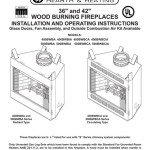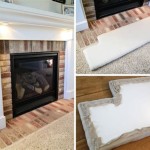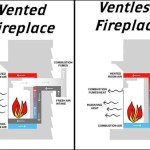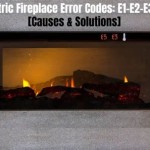Outdoor Fireplace Ideas For Small Spaces
Limited outdoor space does not necessitate sacrificing the ambiance and warmth of a fireplace. Strategic planning and innovative design choices can transform even the smallest patio, balcony, or yard into a cozy and inviting retreat centered around a captivating fire feature. This article explores several outdoor fireplace ideas tailored for small spaces, focusing on maximizing functionality and aesthetics without overwhelming the available area.
The key to successfully incorporating a fireplace into a small outdoor space lies in understanding spatial constraints, selecting appropriate materials, and prioritizing efficient designs. Considerations should include safety regulations, local building codes, and the overall style of the surrounding environment. By carefully weighing these factors, homeowners can create a stunning outdoor fireplace that enhances both the visual appeal and the usability of their limited space.
Choosing the Right Fireplace Type
Selecting the appropriate type of fireplace is paramount when dealing with limited square footage. Traditional wood-burning fireplaces, while aesthetically pleasing, often require significant space for construction and wood storage. Therefore, alternative options like gas-fueled fireplaces, electric fireplaces, and smaller prefabricated models are often more practical for small outdoor spaces.
Gas fireplaces offer a convenient and clean-burning alternative to wood. They can be connected to a natural gas line or propane tank, providing instant heat and adjustable flame intensity. Gas fireplaces require professional installation to ensure safe and efficient operation. Ventless gas fireplaces, while seemingly ideal for space-saving purposes, may not be suitable for all outdoor environments due to ventilation concerns and potential regulatory restrictions. Vented gas fireplaces, although requiring venting systems, provide increased safety and reduced risk of carbon monoxide buildup.
Electric fireplaces provide a simple and versatile solution for small outdoor spaces. They require only a standard electrical outlet and can be easily installed and relocated as needed. Electric fireplaces produce heat through electric resistance and offer realistic flame effects without the need for actual combustion. However, the heating capacity of electric fireplaces may be less than that of gas or wood-burning models, which may be a significant consideration depending on the climate.
Prefabricated fireplaces, available in various materials and styles, offer a convenient and cost-effective option for small outdoor spaces. These units are typically pre-assembled and can be easily installed with minimal construction required. Prefabricated fireplaces are available in both gas and wood-burning models, providing flexibility in fuel selection. When selecting a prefabricated fireplace, it's critical to ensure that it is specifically designed for outdoor use and complies with all relevant safety standards.
Optimizing Space Through Design and Layout
Smart design and layout strategies are essential for maximizing space when incorporating a fireplace into a small outdoor area. Vertical fireplaces, such as those built into walls or fences, can save valuable floor space while creating a stunning focal point. Corner fireplaces are another excellent option for utilizing otherwise unused areas of the patio or yard. Integrating the fireplace into existing structures, such as retaining walls or outdoor kitchens, can also help to minimize the overall footprint.
Multi-functional design elements can further enhance the usability of the space. For example, a fireplace with built-in seating or storage can provide both warmth and practical functionality. Fire pits, typically smaller and more compact than traditional fireplaces, offer a more informal and flexible option for small outdoor gatherings. Portable fire pits, available in various sizes and materials, can be easily moved and stored when not in use, making them ideal for very limited spaces.
Consider the proximity of the fireplace to other outdoor features, such as seating areas, dining tables, and landscaping. Ensure adequate clearance around the fireplace to prevent fire hazards and allow for comfortable movement. The placement of furniture and accessories should complement the fireplace without overcrowding the space. Simple, minimalist furniture designs and light, airy colors can help to create a sense of spaciousness.
Landscaping can also play a crucial role in enhancing the ambiance of the outdoor fireplace. Incorporating drought-tolerant plants, such as succulents and ornamental grasses, can add texture and visual interest without requiring excessive maintenance. Low-growing shrubs and groundcovers can help to define the boundaries of the space and create a sense of enclosure. Strategic placement of lighting fixtures can further enhance the atmosphere and extend the usability of the outdoor area into the evening hours.
Material Selection and Safety Considerations
The choice of materials for an outdoor fireplace should be carefully considered based on durability, aesthetics, and safety. Fire-resistant materials such as brick, stone, concrete, and metal are commonly used for outdoor fireplace construction. The selection of materials should complement the existing architectural style of the home and blend seamlessly with the surrounding landscape.
Brick is a classic and durable material that offers excellent fire resistance and a timeless aesthetic. Brick fireplaces can be customized with various colors and textures to match any design style. Stone is another popular choice for outdoor fireplaces, offering a natural and rustic look. Stone fireplaces can be constructed from various types of stone, including fieldstone, river rock, and flagstone.
Concrete is a versatile and cost-effective material that can be molded into various shapes and sizes. Concrete fireplaces can be finished with a variety of textures and colors to create a modern or contemporary look. Metal fireplaces, typically constructed from stainless steel or weatherproofed steel, offer a sleek and modern aesthetic. Metal fireplaces are often used in prefabricated models and can be easily installed.
Safety should be the top priority when designing and installing an outdoor fireplace. Ensure that the fireplace is located a safe distance from any flammable materials, such as trees, fences, and buildings. Follow all local building codes and regulations regarding outdoor fireplaces. Install a spark arrestor on wood-burning fireplaces to prevent embers from escaping and potentially causing fires.
Regularly inspect and maintain the fireplace to ensure that it is in good working condition. Clean the fireplace regularly to remove any debris or buildup. Have gas fireplaces professionally inspected and serviced annually to ensure safe and efficient operation. Never leave a fire unattended and always have a fire extinguisher or water source readily available in case of emergencies. Educate all household members about fire safety and proper fireplace operation.
In summation, maximizing the potential of a small outdoor space with a fireplace requires careful consideration of fireplace type, design optimization, and material selection, all while prioritizing safety. Opting for gas or electric models instead of traditional wood-burning fireplaces can free up valuable space. Designing vertically or incorporating the fireplace into existing structures utilizes space efficiently. Durable and fire-resistant materials like brick, stone, concrete, or metal are crucial for safe construction. By adhering to safety regulations and implementing thoughtful designs, even the smallest outdoor area can be transformed into a cozy and inviting haven centered around a beautiful and functional fireplace.
Building a DIY fireplace can be a rewarding project for experienced homeowners. Properly researching and adhering to established safety protocols and building codes is paramount. If the DIY project involves gas lines or electrical wiring, hiring licensed professionals is necessary to ensure safety and compliance. A professional installation will not only guarantee safety but also ensure optimal performance and longevity of the fireplace.
The integration of smart technology can further enhance the functionality and convenience of an outdoor fireplace. Smart fireplaces can be controlled remotely via smartphone or tablet, allowing users to adjust the flame intensity, temperature, and timer settings from anywhere. Some smart fireplaces also feature built-in sensors that automatically shut off the fire in case of emergency, such as a sudden change in weather conditions or a malfunction. Smart lighting systems can be integrated with the fireplace to create custom lighting scenes that enhance the ambiance and mood of the outdoor space.
The addition of an outdoor fireplace can significantly increase the value and appeal of a home. A well-designed and properly installed outdoor fireplace can transform a neglected patio or yard into a sought-after outdoor living space. This feature not only enhances the homeowner's enjoyment of the property but also makes it more attractive to potential buyers. Investing in a high-quality outdoor fireplace is a worthwhile investment that can provide years of enjoyment and add lasting value to the home.

Outdoor Fireplace Designs For Small Spaces

30 Outdoor Fireplace Ideas For A Cozy Backyard

24 Creative Outdoor Fire Pit Ideas Extra Space Storage

30 Outdoor Fireplace Ideas For A Cozy Backyard

Outdoor Fireplace Designs For Small Spaces
:max_bytes(150000):strip_icc()/tall-outdoor-fireplace-0322-2000-6ad79530d4e142439b2b1af83bd208e6-566eb93b55d741e594315a57bc4ded71.jpeg?strip=all)
30 Fire Pit Ideas That Bring Year Round Coziness To Your Yard

9 Outdoor Fireplace Ideas Town Country Living

15 Best Outdoor Fire Pit Ideas For Your Backyard

Cozy 100 Outdoor Fireplace For Small Patio Ideas How To Choose Right Fireplaces Fo Living Space

Creative Outdoor Fireplace Designs And Ideas
Related Posts








